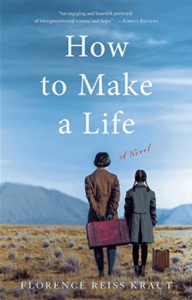This true, five-generation family saga by Florence Reiss Kraut makes great reading. The opening scene shows Ida, a Ukrainian mother, and two of her young children quaking in a cellar while marauders slaughter the rest of the family above. The scene is eerily relevant today, only now the marauders aren’t sword-wielding cavalry but Russian bombs lobbed from a distance.
Ida’s Jewish family has been living comfortably off of what they can produce on their land. The year is 1905. Reminiscent of Fiddler on the Roof, they are part of a community guided by tradition and supported by hard work. The threat of anti-semitism has been lurking in the background for a long time, but is manifested in a single day.
While the book can stand alone as an absorbing story, it got this reader thinking.
After a wrenching, desperate displacement to New York, the generations become better and better educated and more and more prosperous…and less and less able to deal with life.
Ida, the progenitor, emerges from the cellar and finds one daughter lying on the ground with her skirt above her head, bloody, raped, and murdered. Her husband’s chest has been split open. Two other children have died holding each other’s hand. In New York some years later, one of the two surviving daughters is scalded to death. The effect of these disasters turns Ida aggressive, even cruel, so she makes a conscious decision to lock them away forever. She worries about staining her promising American family with horrifying memories.
But the avatar of desperation, imminent danger and death, and pervasive insecurity persists in the family, leading this reader to observe that our lives are shaped not only by the DNA of our ancestors, but also by their choices, their experiences, and their secrets. Ida’s descendants do not need to know her secrets to feel their effect.
Through the generations, this family falls apart, comes together, manages the good and bad vicissitudes of life, and survives as a unit, missing a few fragments, but a unit nonetheless. Like most people, they do the best they can. The theme of family as savior and restorer is a familiar one, investigated in detail in this saga. It is not pie-in-the-sky fare, it is a hardscrabble portrayal of a humanity that plays out around us every day.
The cultural framework of Judaism flows through the century of family history, bringing comfort and a clear sense of identity. It takes five generations for religious and cultural cohesion to fray under the influence of America’s diversity. The author presents this fraying without judgment, leaving that to her readers.
Readers will find their thoughts provoked in different ways by this saga. It contains fodder aplenty for the mind to chew on…or maybe you’d just like to read it as a heckuva good story.
